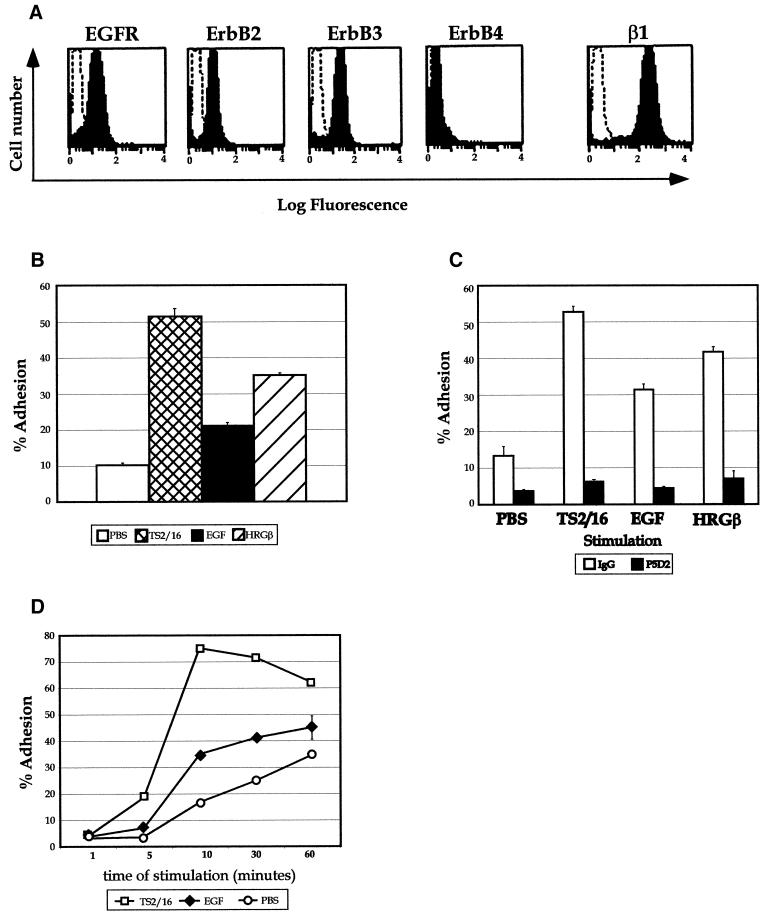Figure 1.
EGF and HRGβ modulate breast carcinoma cell adhesion to ECM ligands. (A) Surface expression of the EGFR, erbB2, erbB3, erbB4, or β1-integrin on MDA-MB-435 cells was determined by flow cytometry as described in MATERIALS AND METHODS. Representative histogram profiles are shown, with open histograms representing negatively stained control cells. (B) Cells were analyzed for their ability to respond to EGF or HRGβ treatment in cell adhesion assays performed on human type IV COLL. Cells that had been serum starved for 12–24 h were harvested by release from tissue culture flasks in 1 mM EDTA. Suspended cells were than washed in serum-free media to remove excess EDTA before quantitation and labeling with Calcein AM as previously described (Zell et al., 1996). Adhesion assays were performed in 96-well plates that were precoated overnight at 4°C with COLL at 1 μg/well. Cells were then added to wells containing assay media alone (open bar) or stimulators: the activating β1-integrin-specific monoclonal antibody TS2/16 (cross-hatched bar), EGF at 100 ng/ml final concentration (shaded bar), or HRGβ at 100 ng/ml (hatched bar). (C) For blocking of β1-integrins, cells were preincubated at 4°C with control mouse IgG (open bars) or with the inhibitory β1-integrin-specific antibody P5D2 (shaded bars; a kind gift from T. LeBien) at 1 μg/1 × 106 cells for 10 min before addition to plates coated with 1 μg/well COLL. The time course of adhesion to COLL (D) was determined in the presence of 1 μg/well TS2/16 (open squares) or 100 ng/ml EGF (solid diamonds) in comparison with unstimulated adhesion (PBS; open circles). Cells were allowed to settle briefly in wells before analyzing preadherent fluorescence on a fluorescence plate reader. Cells were then stimulated at 37°C for 10 min or for designated times before removing nonadherent cells by hand washing with a syringe–manifold system. Comparison of adhesion with human type IV collagen or mouse EHS-collagen did not show significant differences (our unpublished data). Adhesion data are representative of at least three independent experiments and reflect the average of triplicate samples per condition.

